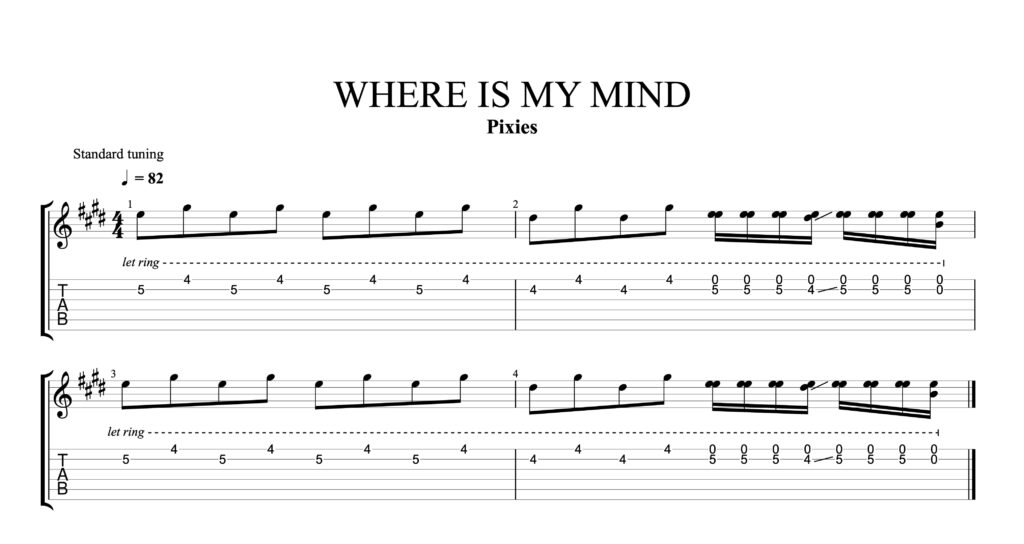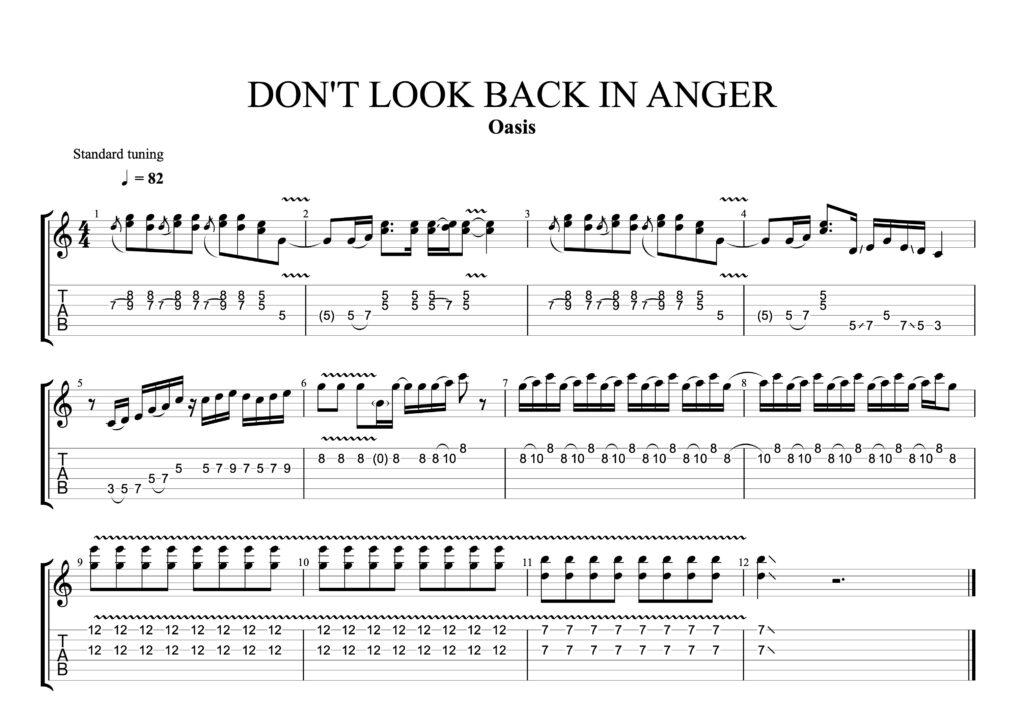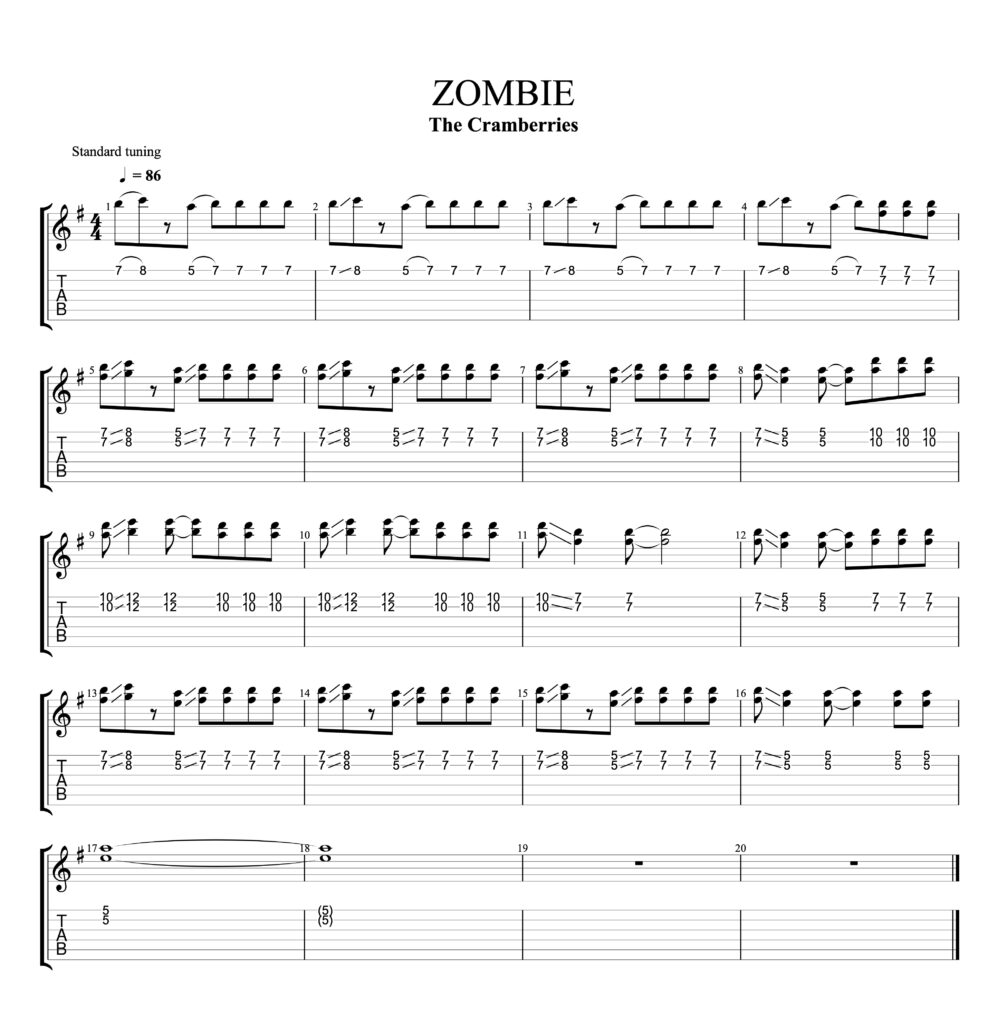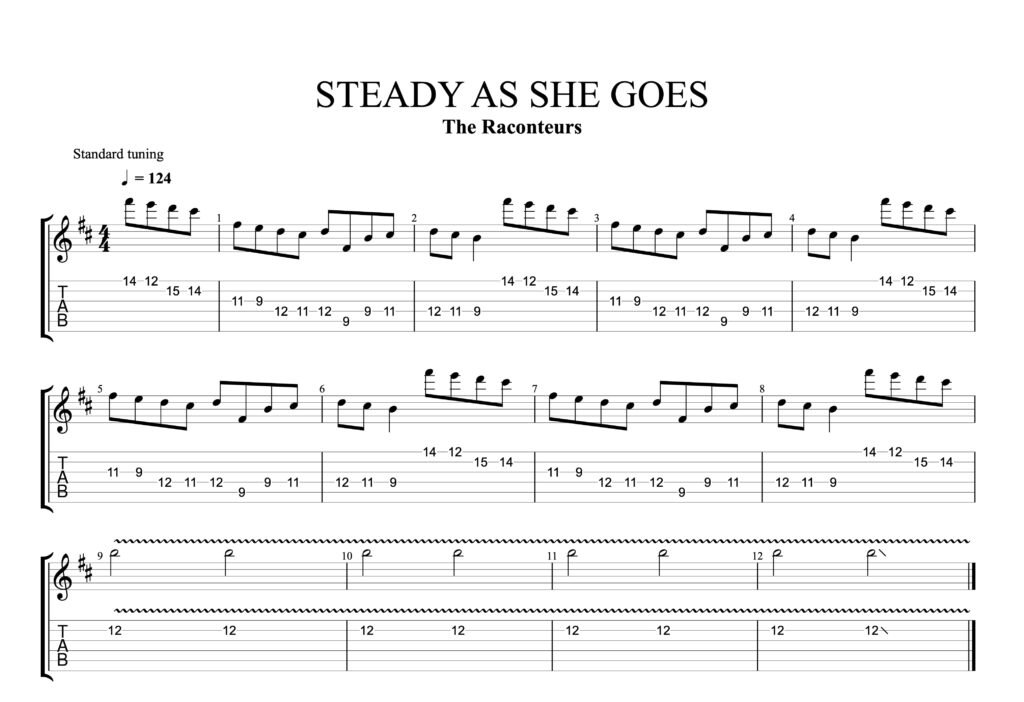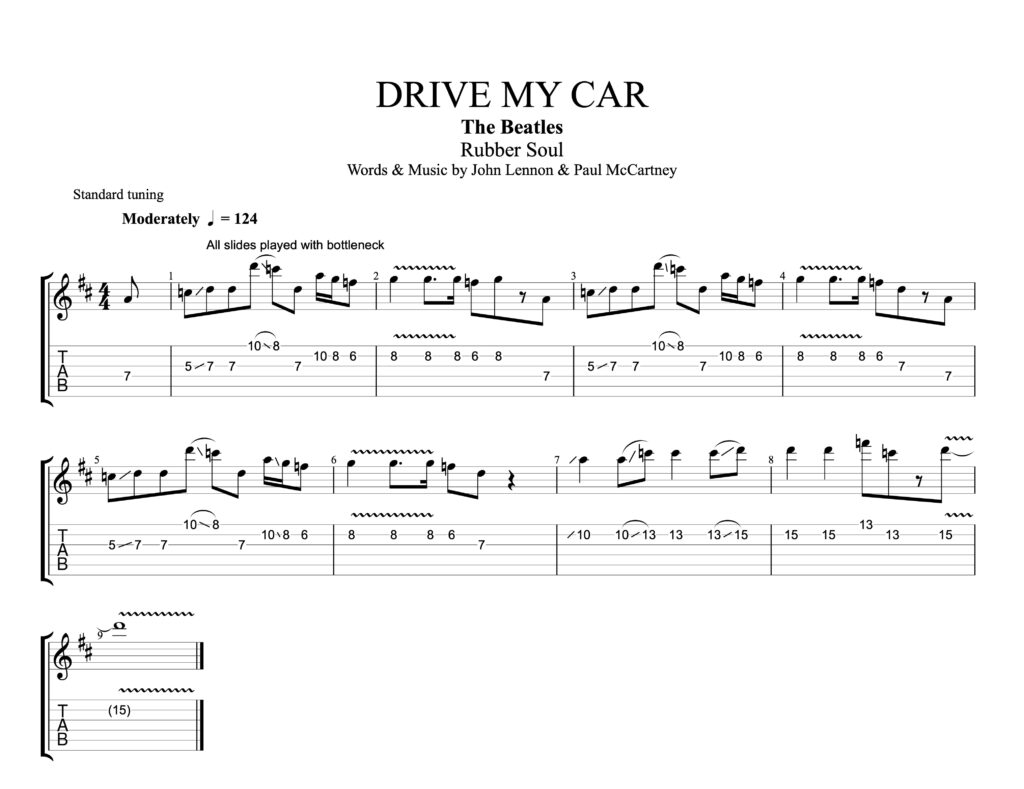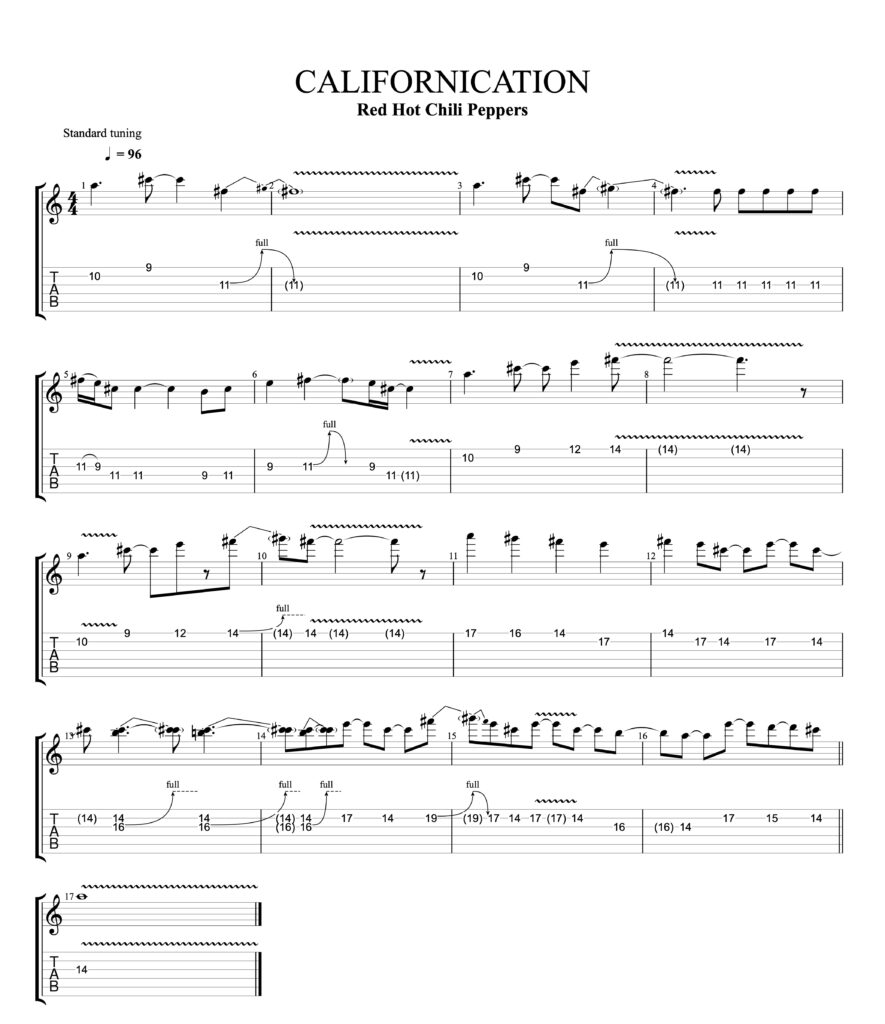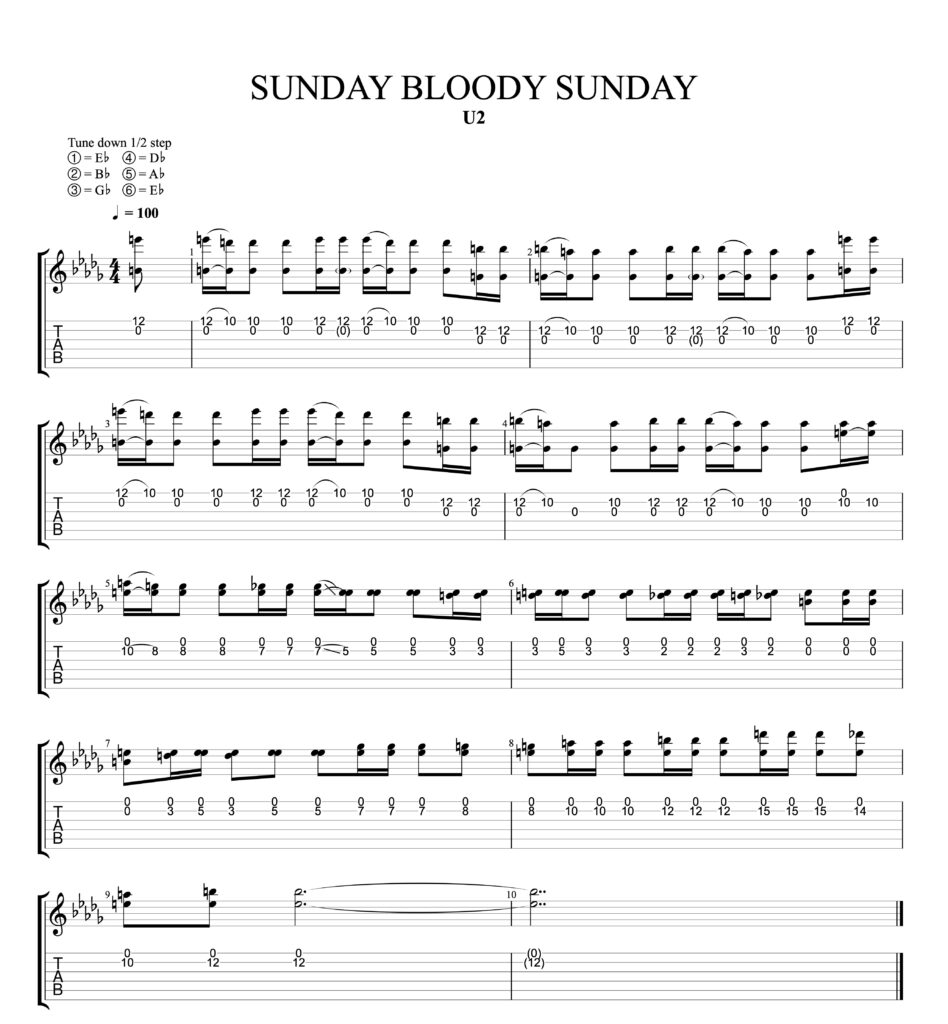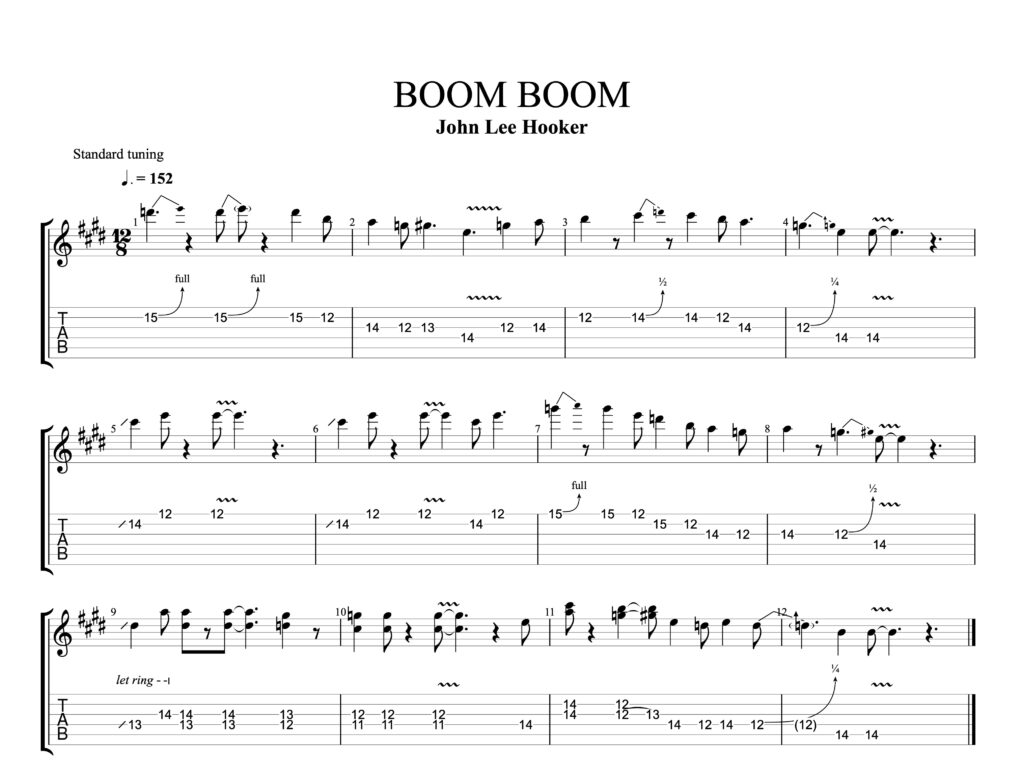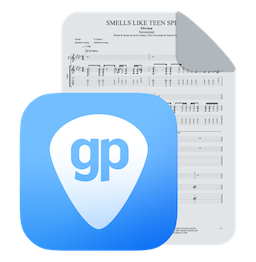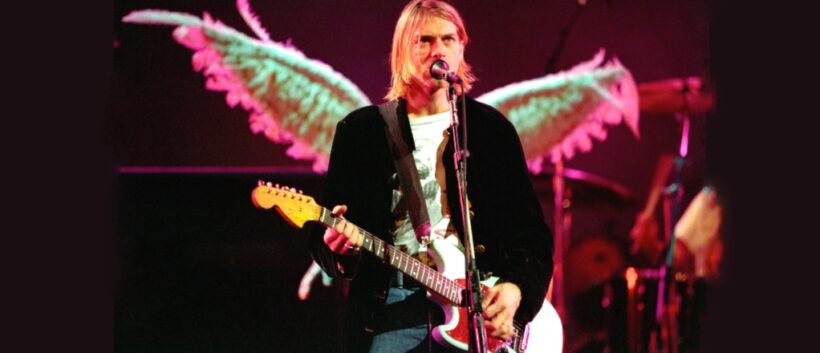
10 easy and fun guitar solos for beginners
- Nirvana – Come As You Are (Part 8)
- The Pixies – Where Is My Mind (2) (Part 1)
- Oasis – Don’t Look Back in Anger (2) (Part 2)
- The Blues Brothers – Peter Gunn (Part 2)
- The Cranberries – Zombie (Part 2)
- The Raconteurs – Steady As She Goes (Part 7)
- The Beatles – Drive My Car (2) (Part 2)
- Red Hot Chili Peppers – Californication (Part 7)
- U2 – Sunday Bloody Sunday (Part 6)
- John Lee Hooker – Boom Boom (2) (part 4)
- come-as-you-are-part-8.gp
- where-is-my-mind-part-1.gp
- dont-look-back-part-2.gp
- peter-gunn-part-2.gp
- zombie-part-2.gp
- steady-as-she-goes-part-7.gp
- drive-my-car-part-2.gp
- californication-part-7.gp
- sunday-part-6.gp
- boom-boom-part-4.gp
Sure, rhythm is absolutely the most important part of guitar playing, and if you want to start a band and write songs you need to brush up on your power chords and strumming technique.
But then again, is there anything more fun than playing a solo? The History of rock guitar is made of those epic 30 or 40-second moments that allow our favorite instrument to take centre stage and voice its take on the song.
As a beginner, you could be forgiven for being wary of getting into solos. They are considered to be more technically demanding than rhythm parts (even if that point could be debated) and seem like a lot of work. But some solos are easier to play, mostly because they are not as fast and filled with notes as they could be, and just because they are on the easier side doesn’t make them any less fun.
In order to work out a solo, start out by listening to it a few times in order to really grasp its musical flow and understand where it’s coming from. Then learn the rhythm part if you really want to understand how the solo articulates. And then get into the solo per se. There are many guitar lessons available on the Play Guitar Hits app, and many of them will take you through easy lead guitar parts and show you exactly how it’s done.
Don’t go too fast: just because you can play a lick or a phrase doesn’t mean you can play the solo. Start off with the first musical phrase, play it slowly and, once it’s clean, speed up until you reach the actual speed. Then do the same with the second phrase, and play the two phrases with the playback. And so on. Playing a solo means you have the whole thing memorized, which takes time and patience, but it is the best way of getting better at playing solos, since it will teach you how to build a solo but also you will learn licks that you can use in your own songs.
Without further ado, here are ten legendary solos that you can play as a beginner with just a little work. They are all available on Play Guitar Hits where you will find the tabs and videos that you can slow down to really get the details right.
Pick a song you like and start wailing away!
Nirvana – Come As You Are (Part 8)
Very few guitarists can actually manage to pull so much emotional content out of so few notes. Kurt Cobain was a great player who could tell a story with only a few words.
This solo is basically the vocal melody played on the guitar, which is always a great trick if you don’t know where to take your lead part. Slides abound, and there’s also a bend of two strings at the same time, but Cobain’s style is sloppy enough that you don’t have to worry so much about the pitch of your bends.
Soundwise, distortion is a must, and a chorus pedal will help you get closer to the aquatic sound of the original recording.
The Pixies – Where Is My Mind (2) (Part 1)
This late eighties indie anthem starts off with an iconic guitar melody that might not be a solo per se, but uses techniques from the solo bag and it is just so fun to play that you wouldn’t want to miss out on a technicality!
Guitarist Joey Santiago plays the lick on his Les Paul with a medium overdrive and takes advantage of the dissonance brought by playing the open string of high E alongside the Eb on the fourth fret of the B string. This song actually uses the E major scale rather than the usual minor pentatonic.
Oasis – Don’t Look Back in Anger (2) (Part 2)
Hey, another solo on the major scale! This one is in C major, and it’s just as anthemic as the song it is part of. Noel Gallagher plays this scorcher on a crunchy Epiphone Sheraton but on the Play Guitar Hits you will find a quieter arrangement for acoustic guitar. It does not stray too far away from the original and you get to work on double stops (playing lead guitar on two strings at once), a classic move that Chuck Berry pioneered.
The Blues Brothers – Peter Gunn (Part 2)
Speaking of Chuck Berry, here is a blues scorcher that makes good use of Berry’s classic lick that alternates between a bend on the G string and double stops on the B and high E strings.
Although Steve Cropper only plays rhythm guitar on the original recording, you will find a very cool bluesy solo on the Play Guitar Hits that will fit nicely with the E minor pentatonic vamp that the whole song is built around. A few notes have been taken from E major, the rest is pure minor pentatonic blues going from the first position to the octave using a few notes in between. Great licks abound, including a killer one with a bend of the G string along with a non-bended note on the B.
Every lick here is a precious one to add to your blues vocabulary, so you know what to do!
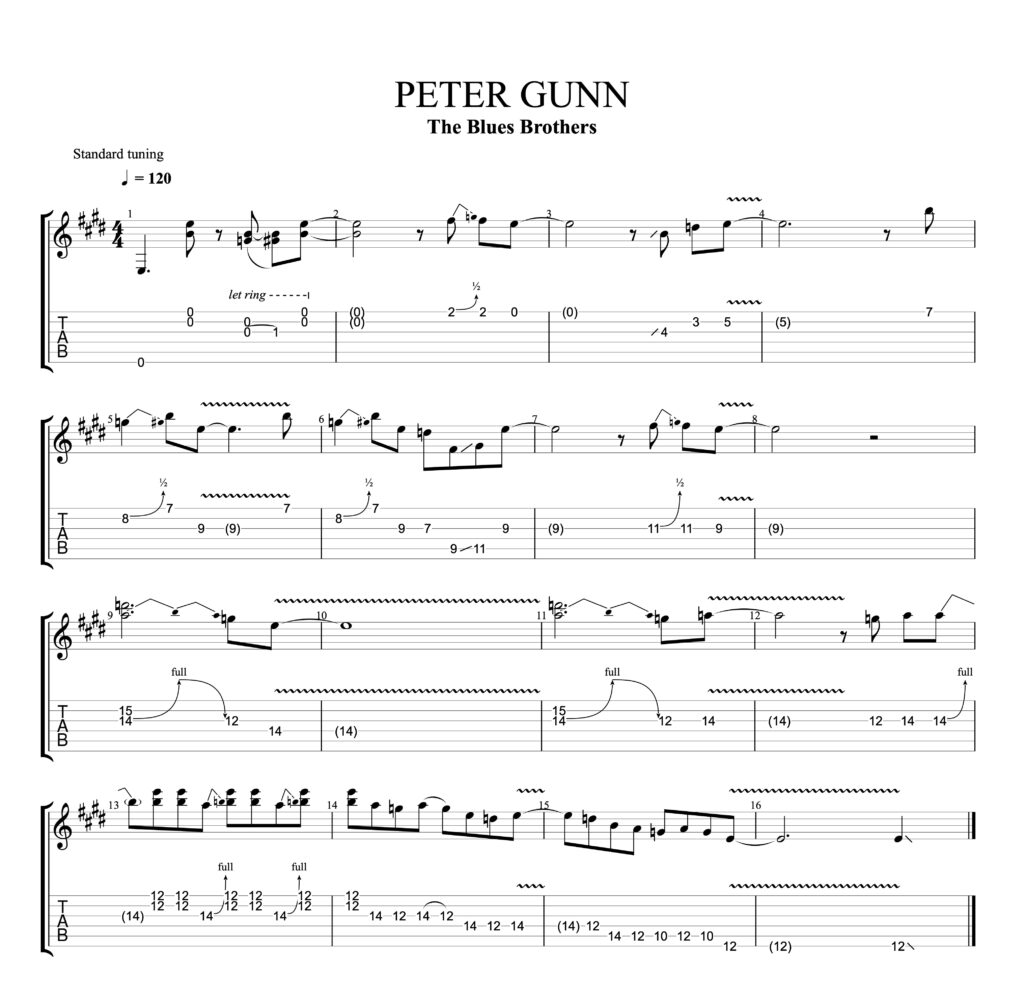
The Cranberries – Zombie (Part 2)
This evergreen nineties classic rides the fine line between an instrumental theme and a solo. That guitar part is such an integral part of the song that it’s impossible to imagine “Zombie” without it, which is the ultimate proof of a well-crafted solo.
Interestingly enough, even though Noel Hogan is the main guitarist of the band, singer and main songwriter Dolores O’ Riordan is the one who plays that solo on her distorted Gibson ES-335. Use a standard overdrive pedal, turn up the gain and add a little reverb to help the notes blend into each other.
The solo is built around the E minor pentatonic scale, and the main difficulty comes from the slides from one note to the next. You start off sliding one note at a time, and then add another string to the mix, so the solo builds up in difficulty as you go along.
The Raconteurs – Steady As She Goes (Part 7)
This insanely cool single from the 2006 debut by Jack White and Brendan Benson’s band The Raconteurs features more than a few guitar layers, cool arrangements that make the song really interesting. This part is in the background of the third verse, so use the Play Guitar Hits version to hear it more distinctly. It follows the vocal line in the B minor natural scale with a heavy fuzz sound, which will provide the main challenge of this solo: to keep it as clean as you can! The rest is pretty straightforward, play it slow and pick up the pace as you get comfortable.
The Beatles – Drive My Car (2) (Part 2)
George Harrison was not a shredder but he could craft a perfect eight-bar melody on the guitar that would become the hook of a song. Any solo from the Beatles’ catalog would be a great way to work on your phrasing and note choice, but this one is particularly interesting in that it will allow you to work on your bottleneck technique.
Bottleneck or slide playing was developed by the Delta Blues cats of the early twentieth century, and consists in putting a tube of metal or glass around your ring finger or pinky in order to slide from note to note on the fretboard.
This simple D minor pentatonic solo is the perfect way to get started and work on all the things that make a good slide player: intonation, playing clean and vibrato.
Red Hot Chili Peppers – Californication (Part 7)
For many players, this iconic solo is the perfect gateway to tearing it up as a lead guitar player. John Frusciante’s playing is by no means technically complex, but it oozes with soul and every note is right where it should be.
Californication has a gorgeous solo in F# minor pentatonic, which really elevates the song from the gloomy A minor mood of the verses. The sound is quite clean, with a hint of compression, and a little overdrive will help you avoid the solo’s potential for squeakiness, especially with the many bends it contains.
U2 – Sunday Bloody Sunday (Part 6)
Talk about short but intense! In eight bars only, The Edge takes what was already a great song by U2 and turns it into a monument. The Irish guitar hero has a reputation for getting complex sounds out of layered effects, but this solo is something else. The sound is a regular Strat into a Vox amp with a little delay added to tie it all together, but it’s the way those are played that makes it great, while still being easy to play.
The Edge plays the melody on the high E string and plays along on the open B string as a drone, which makes sense since the song is in the key of B minor. A great way of filling up space without getting gimmicky.
John Lee Hooker – Boom Boom (2) (part 4)
Let’s face it: if you’re trying to learn how to improvise compelling solos, there’s no way around learning how to play the blues. The way the pentatonic scale is used and most of the vocabulary of lead rock playing (including slides, bends, double stops…) have been borrowed from the blues idiom.
And if you wanna get that boogie going, look no further than John Lee Hooker: he invented it! The song Boom Boom has been a classic from Hooker’s repertoire for decades, and the Play Guitar Hits features a simple 12-bar solo in E minor pentatonic that takes you through many classic licks that you should know. Most of them will work in many different contexts and – trust us on that one – you will be glad you’ve worked on them beforehand.
Here they are: ten solos that you can approach as a beginner, all of them available on the Play Guitar Hits app with tabs and videos.
Take the time to properly work on them and they will provide you with a lifetime of cool licks that will become part of your own vocabulary. Enjoy!
Leave a comment
Your email address will not be published.
| Title | Artist | |
|---|---|---|
Sweet Child O' Mine

|
Guns N' Roses | |
Poison

|
Alice Cooper | |
| Mary Jane Kelly | Volbeat | |
My Girl

|
The Temptations | |
Mannish Boy

|
Muddy Waters |


